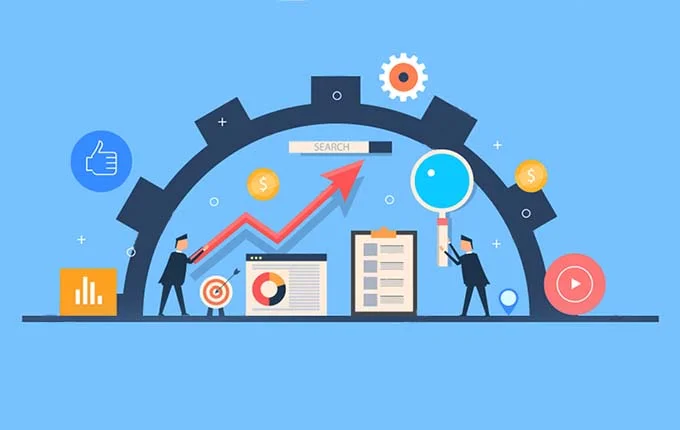Modern software development has evolved into an intricate and dynamic field, characterized by increasing complexity and high user expectations. With applications now running across diverse environments, maintaining their reliability, performance, and security is non-negotiable. This is where application monitoring becomes a vital element for developers, DevOps engineers, and tech leads.
In this article, we will explore why monitoring your application is important, uncover the various types of monitoring, and provide actionable best practices to optimize your monitoring process. By the end, you’ll understand how effective monitoring can ensure uptime, enhance performance, and improve user satisfaction.
Why Monitoring Matters
Ensuring Application Uptime and Availability
User satisfaction is deeply tied to application availability. Nothing frustrates users more than encountering downtime or a slow-loading service. Monitoring ensures application health by tracking uptime and identifying server failures or performance issues before they disrupt the user experience.
For example, downtime caused by server overloads can be mitigated using real-time alerts via monitoring systems like Pingdom or StatusCake. These tools help detect and resolve issues instantly, reducing revenue loss caused by inactivity.
Identifying Performance Bottlenecks
Application performance isn’t just about functionality—it’s about speed and responsiveness, which play a major role in user retention. Monitoring tools like New Relic or Dynatrace can identify code-related delays, memory leaks, or inefficient database queries, allowing teams to resolve these bottlenecks efficiently.
Performance monitoring keeps an eye on metrics such as response time, error rates, and resource utilization, giving developers insights they wouldn’t gain through manual testing alone.
Improving User Experience
Today, user experience goes beyond design—it also includes seamless interactions without disruptions. Real-time monitoring ensures that users are not burdened by lags or crashes. Real User Monitoring (RUM) tools, for instance, provide actual user data on how the application performs for real-world customers, offering valuable performance feedback.
For a modern business, prioritizing user experience through application monitoring builds trust and cultivates loyal users who are likely to return.
Enhancing Security
With cyberattacks on the rise, application monitoring also serves as a security shield. Tools like Splunk or SolarWinds proactively track anomalies within your application’s logs, signaling potential threats. By evaluating unusual activities, such as unauthorized logins or sudden usage spikes, IT teams can act swiftly to prevent breaches and data loss.
Effective security monitoring enhances compliance with industry standards, reassuring users that their sensitive data is well-protected.
Types of Application Monitoring

Infrastructure Monitoring
Infrastructure monitoring focuses on the underlying components that support an application, including servers, networks, and storage. Tools like Nagios or Datadog monitor resource usage, server health, and metrics like CPU and memory usage to ensure consistent performance.
Proactively managing your infrastructure guarantees minimized unplanned outages and resource optimization.
Application Performance Monitoring (APM)
APM is essential for understanding how an application functions. Tools like AppDynamics and New Relic detect how requests are processed, monitor third-party integrations, and identify problematic code sections. Insights gained through APM help teams reduce latency and improve the overall user experience.
Log Monitoring
Logs provide a treasure trove of information about how applications run under different circumstances. Log monitoring tools like ELK Stack (Elasticsearch, Logstash, Kibana) enable teams to search, analyze, and visualize log data for troubleshooting and optimizing performance.
Log monitoring also plays a valuable role in debugging and identifying recurring failures.
Real User Monitoring (RUM)
RUM tools track metrics such as time-to-first-byte, page load speeds, and API calls based on real-world user data. Platforms like Google Analytics RUM or Pingdom RUM provide granular details on the actual user experience, equipping teams to make targeted improvements.
Every team striving for user-centric development should make RUM an integral part of their strategy.
Best Practices for Application Monitoring
Setting Up Alerts and Notifications
Configure proactive alerts and notifications to flag abnormal behavior, such as CPU overload or a sudden spike in memory usage. Use tools that offer granular control over alerting thresholds, like PagerDuty.
Alerts keep teams from missing critical issues and prevent cascading effects caused by negligence.
Automating Monitoring Tasks
Automation streamlines monitoring efforts, reducing the manual workload on DevOps teams. Using automation tools like Zabbix or OpsGenie, developers can create workflows that automatically scale servers or implement recovery protocols when issues are detected.
Using Monitoring Tools
Invest in dedicated monitoring platforms tailored to your needs. Solutions like Splunk, Site24x7, and Nagios empower teams with data visualization, anomaly detection, and actionable insights.
Analyzing Historical Data
Make use of data archives to detect recurring trends and build predictive models for preventing future issues. Historical data can inform strategies for scaling resources during traffic spikes or seasonal demands.
Drive Consistency and Efficiency While Elevating Performance
Proactive monitoring transforms how software development teams operate, ensuring both user satisfaction and peak operational performance. By adopting robust monitoring tools and following best practices, you’ll be empowered to prevent downtime, fix performance bottlenecks, and deliver exceptional user experiences.
At the heart of modern software practices lies the understanding that why monitoring your application is important isn’t just about solving issues—it’s about building applications that thrive in competitive environments.
You May Also Like: Free Tablet with EBT: Unlock Tech Opportunities Today
Conclusion
Investing in comprehensive application monitoring is no longer optional in today’s fast-paced digital landscape. It is a critical step in creating resilient, high-performing software that meets the evolving needs of users and businesses alike. By prioritizing proactive monitoring and incorporating it into your development strategy, you not only safeguard your application’s reliability but also gain valuable insights to foster continuous improvement. Ultimately, effective monitoring empowers your team to stay ahead of potential challenges and deliver seamless experiences that set your application apart in a competitive market.
FAQs
What is application monitoring, and why is it important?
Application monitoring involves using tools and practices to track the health, performance, and security of software applications. It’s important to ensure uptime, stability, and a seamless user experience.
What types of application monitoring should I focus on?
Focus on infrastructure monitoring, Application Performance Monitoring (APM), log monitoring, and Real User Monitoring (RUM) for comprehensive insights.
How does monitoring enhance application security?
Monitoring tracks anomalies and suspicious activities like unauthorized logins or data breaches. Alerts on potential risks allow swift responses to secure applications.
Which tools are best for application monitoring?
Popular tools include Datadog, New Relic, Splunk, and Pingdom, depending on your specific monitoring requirements.
How do I start implementing application monitoring?
Start by identifying key performance metrics, choosing the right tools, and setting up automated alerts. Regularly review and act upon collected data to improve performance.











